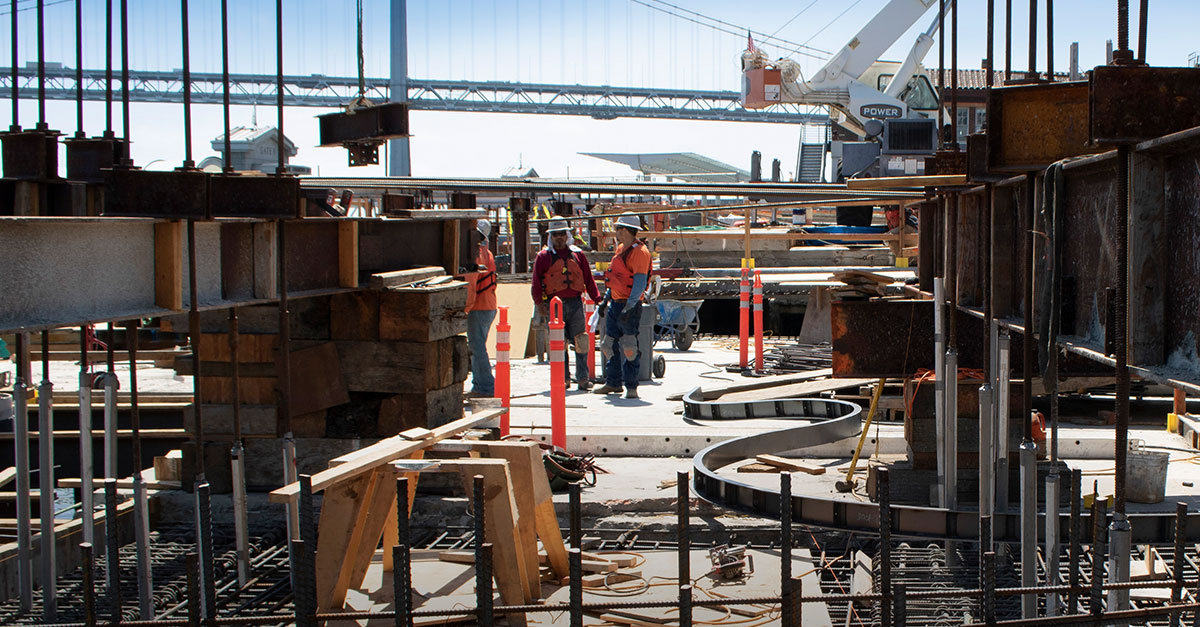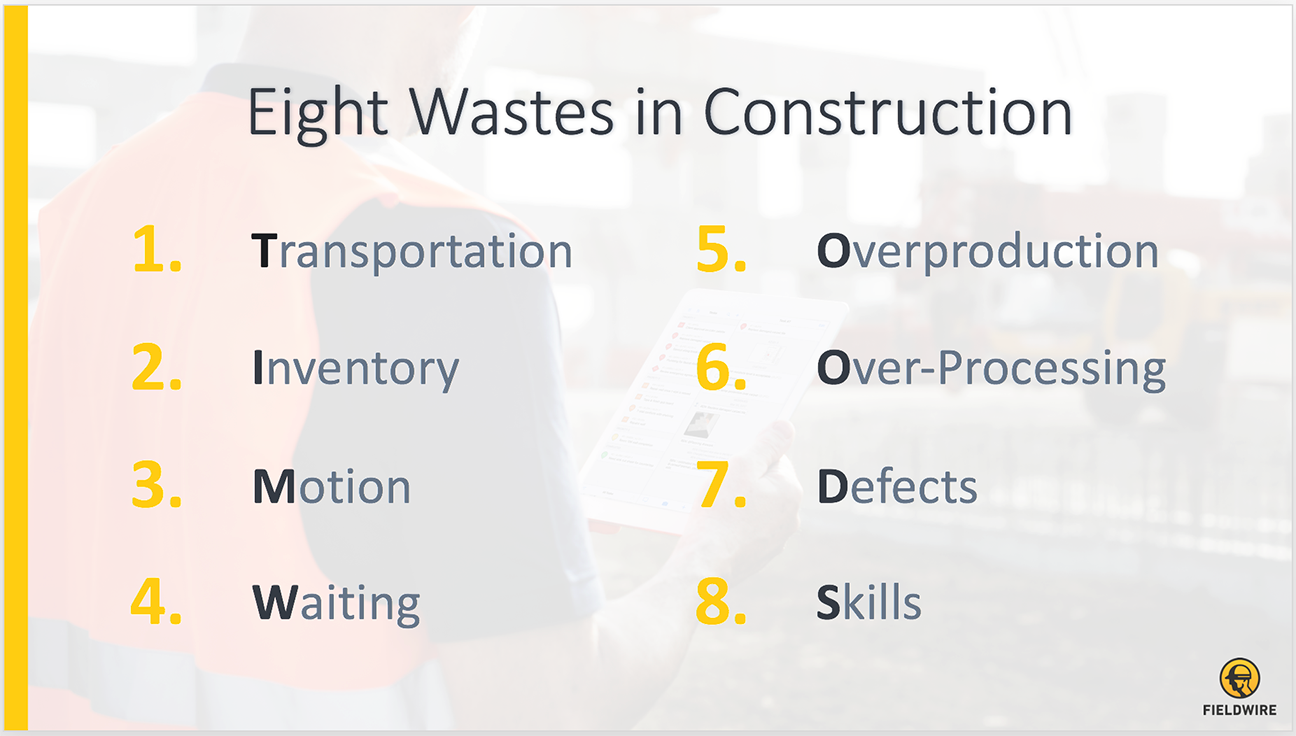The 8 wastes of lean construction

Downtime is the enemy of progress in construction, and downtime is fueled in large part by the 8 wastes of lean construction. The construction industry is responsible for the creation of remarkable achievements, but unfortunately, it can also be responsible for generating inefficiency and waste. Studies show that more than 50 percent of the time spent on construction in the United States is wasted on unproductive activities; anything that can be eliminated without diminishing the value of work for a customer.
The Seven Wastes of lean were originally conceived in Japan with the inefficiencies of manufacturing in mind, but they also apply to construction. We’ve outlined the cause and solution for all seven below, according to Lean literature, along with an eighth waste that’s emerging in the construction industry:

1) Transportation
Transportation waste involves the unnecessary movement of materials or equipment. This can involve movement from one jobsite to another, or from a yard to a material laydown area and then again to the actual work area. While this type of waste cannot be eliminated entirely, transportation waste can be minimized through better communication, coordination, and daily task management. Keeping everyone from the office to the field on the same page reduces the number of unnecessary trips, and reduces the first of our 8 wastes of lean. Transportation waste is especially counterproductive, as it not only adds time to the whole construction process but exposes the material to handling damage.
2) Inventory
In construction, inventory waste occurs when overproduction results in excess material. This includes material being stored on-site or at the fabrication yard, work in progress, and unused tools or parts. While having some inventory on hand is necessary to keep the project moving, these materials should be minimized as much as possible as they tend to require a fair bit of handling (effort) and storage space. Optimize your inventory to reduce this type of waste.
3) Motion
Motion waste is a result of extra steps taken by people to accomplish their work. This includes time spent looking for a tool or file, as well as walking extra yards due to a poorly designed work area. With 70 percent of a craftspersons day wasted on field coordination, it’s important you leverage construction management technology to reduce this number dramatically.
4) Waiting
Perhaps intuitively, this waste happens when crews are left waiting for the delivery of material or equipment, or for the completion of a preceding activity. This also applies to anyone on the project waiting for information, such as field personnel waiting for a plan or an RFI, a scheduler waiting for progress updates, or payroll waiting for time sheets. Having real-time access to this information in the field — from any device or location — will help crews reduce this type of waste.
5) Overproduction
Overproduction is the process of fabricating material too soon or ordering extra material because of poor quality, rather than producing and delivering the right amount of material at the time it is needed. This means that there is overlap between overproduction and another type of lean waste, inventory waste. When overproduction and inventory waste happen, you’ll need to store it on an often overcrowded site, and if your plans change, you’ll need to change the materials you’re using too.
6) Over-processing
Over-processing waste refers to unnecessary steps taken in the project value chain, such as transforming or double-handling material. This also relates to coordination and administrative workflows on a construction project that leads to double data entry, such as multiple signatures on forms, redundant daily reports, and forwarding emails with drawings and RFIs. Eliminating paperwork with blueprint software and having one place to communicate from will ensure jobsite teams are always on the same page and information isn’t lost in various paper files.
7) Defects
Defects are incorrect work that needs to be repaired, replaced, or redone. In lean construction, this includes damaged material, rework, or punch list items. For example, a flooring material not installed per specifications or a finished wall damaged by the electrical contractor would fall under the category of Defects. Having a historical record of all site issues and one place to track punch list items on-the-fly will help you minimize the prevalence of defects. Defects round out the 7 wastes of lean, but there is an 8th waste that is emerging in the literature, both in lean manufacturing and construction.
8) Skills and underutilized talent
The 8th waste of lean involves failing to make use of people’s skills, creativity, or knowledge on a project. This is not one of the traditional Seven Wastes (or seven mudas) found in early Lean literature, but is now commonly accepted as an additional waste of lean, and turns the common mnemonic for the 7 wastes of lean from “TIM WOOD” to “TIM WOODS”. Your employees are your greatest asset, so they should be empowered with the tools they need to thrive. Using construction management software allows everyone from the office to the field to communicate and collaborate in real time, ensuring that no idea goes unheard. Construction apps help to ensure that everyone’s skills are being utilized.
We hope this post which has been updated from a previous version for accuracy and comprehensiveness, will give you some ideas on how to be less wasteful and more productive on your next construction project. Don’t let waste stand in your way!

 Stéphane Denerolle •
Stéphane Denerolle • 



















